
The Great Western Railway (GWR) was a British railway company that linked London with the southwest, west and West Midlands of England and most of Wales. It was founded in 1833, received its enabling act of Parliament on 31 August 1835 and ran its first trains in 1838 with the initial route completed between London and Bristol in 1841. It was engineered by Isambard Kingdom Brunel, who chose a broad gauge of 7 ft —later slightly widened to 7 ft 1⁄4 in —but, from 1854, a series of amalgamations saw it also operate 4 ft 8+1⁄2 in standard-gauge trains; the last broad-gauge services were operated in 1892.
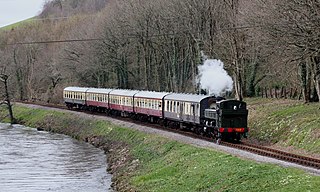
The South Devon Railway (SDR) is a 6.64-mile (10.69 km) heritage railway from Totnes to Buckfastleigh in Devon. Mostly running alongside the River Dart, it was initially known as the Dart Valley Railway. The railway is now operated by the South Devon Railway Trust, a registered charity.

The first Locomotives of the Great Western Railway (GWR) were specified by Isambard Kingdom Brunel but Daniel Gooch was soon appointed as the railway's Locomotive Superintendent. He designed several different 7 ft 1⁄4 in broad gauge types for the growing railway, such as the Firefly and later Iron Duke Class 2-2-2s. In 1864 Gooch was succeeded by Joseph Armstrong who brought his standard gauge experience to the workshops at Swindon. To replace some of the earlier locomotives, he put broad gauge wheels on his standard gauge locomotives and from this time on all locomotives were given numbers, including the broad gauge ones that had previously carried just names.
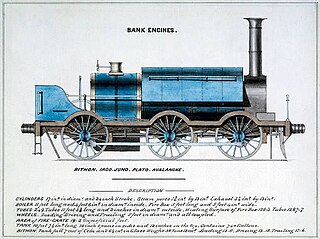
The Banking Class were five 0-6-0ST Brunel gauge steam locomotives for assisting ("banking") trains up inclines on the Great Western Railway. Designed by Daniel Gooch, they were tank engine versions of his Standard Goods class, and mainly built at Swindon Works.
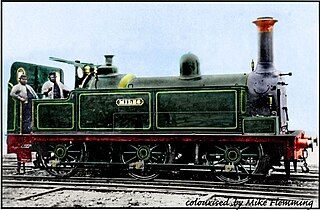
The Great Western Railway Sir Watkin Class were 0-6-0T broad gauge steam locomotives. They were designed for working goods trains through to the underground Metropolitan Railway in London. This class was introduced into service between December 1865 and the last was withdrawn at the end of the GWR broad gauge in May 1892. They were all named after directors and senior officers of the railway.
The GWR was the longest-lived of the pre-nationalisation railway companies in Britain, surviving the 'Grouping' of the railways in 1923 almost unchanged. As a result, the history of its numbering and classification of locomotives is relatively complicated. This page explains the principal systems that were used.
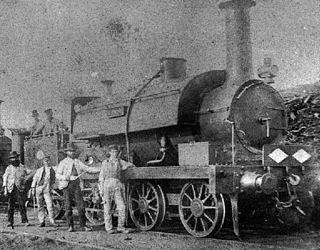
South Devon Railway locomotives were broad gauge locomotives that operated over the South Devon Railway, Cornwall Railway, and West Cornwall Railway in England. They were, at times, operated by contractors on behalf of the railways.

The South Devon Railway 0-4-0 locomotives were small 0-4-0 broad gauge locomotives operated on the South Devon Railway, Cornwall Railway, mainly on the dockside lines around Plymouth.
The Eagle class were sixteen 4-4-0ST broad gauge locomotives operated on the South Devon Railway (SDR), Cornwall Railway (CR) and associated adjacent railways. They were designed for passenger trains on this steep and sharply curved line but were also used on goods trains when required.
The two Remus class locomotives were 0-6-0ST broad gauge locomotives operated by the South Devon Railway, England. They were ordered for working goods trains on the West Cornwall Railway but were also used on passenger trains.

The South Devon Railway 2-4-0 locomotives were small 2-4-0T broad gauge locomotives operated on the South Devon Railway, mainly on its branch lines such as that to Ashburton.

The Leopard class were four 4-4-0ST broad gauge locomotives designed for passenger trains but were also used on goods trains when required. They were built by the Avonside Engine Company for the South Devon Railway, but also operated on its associated railways. Although designed for easy conversion to standard gauge this was never carried out.
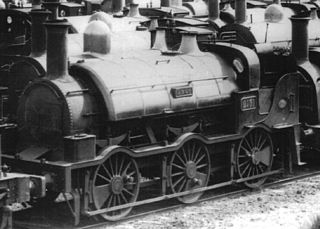
The eight Dido class locomotives were 0-6-0ST broad gauge locomotives operated on the South Devon Railway and Cornwall Railway and associated other adjacent railways. They were designed for goods trains but were also used on passenger trains when required.
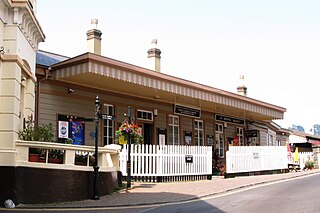
The Dartmouth and Torbay Railway was a broad gauge railway linking the South Devon Railway branch at Torquay with Kingswear in Devon, England. It was operated from the outset by the South Devon Railway.
The Torbay and Brixham Railway was a 7 ft broad gauge railway in England which linked the Dartmouth and Torbay Railway at Churston railway station, Devon with the important fishing port of Brixham. It was a little over two miles long. Never more than a local branch line, it closed in 1963.

The Bristol and Exeter Railway locomotives worked trains on the Bristol and Exeter Railway from 1 May 1849 until the railway was amalgamated with the Great Western Railway on 1 January 1876.
The 26 Bristol and Exeter Railway 4-4-0ST locomotives were broad gauge 4-4-0ST steam locomotives. They first entered service in 1855 and the last was withdrawn in 1892. The Bristol and Exeter Railway was amalgamated into the Great Western Railway on 1 January 1876.
Vale of Neath Railway 0-6-0ST locomotives were 0-6-0ST steam locomotives for working the heavy goods traffic on the Vale of Neath Railway and its associated lines in Wales. The first of 13 broad gauge locomotives entered service in 1854 and the last was withdrawn in 1886. The remaining four were standard gauge locomotives.
The Daniel Gooch standard gauge locomotives comprise several classes of locomotives designed by Daniel Gooch, Superintendent of Locomotive Engines for the Great Western Railway (GWR) from 1837 to 1864.













